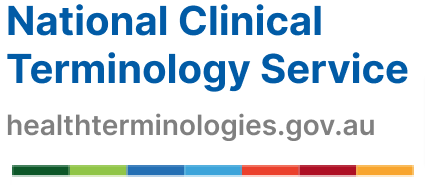Tools for browsing and authoring terminologies
There are many user-friendly tools that make it easy to search, visualise and explore the structure and content of terminologies. There are also tools to create native FHIR terminology resources for local use. We recommend Shrimp and Snapper because they are backed by Ontoserver and are optimised for Australian use.
Terminology browsers
Explore terminology concepts and the properties that define them with a terminology browser. This helps users
- understand the content
- request additional content for the national release
- create local content
These tools are available in a variety of formats including public online browsers and downloadable applications for PCs and mobile devices.
In determining which browser is most fit for your purpose, consider the following:
- Do I need to search more than one terminology or extension?
- What are the searching and browsing capabilities of the tool?
- Can I access the current release (as well as earlier releases if required)?
- Does it display the terminology release version?
- How quickly is the data updated following a release?
- Can I integrate with my local terminology server?
All tools providing access to terminologies should show the version of the release and any extensions included. They should also ensure access to the current release. The NCTS is not able to monitor all available products to ensure conformance with this advice. Therefore, users should be aware some browsers may be out of date and may not include relevant national or local extensions.
Use of publicly available software and tools that include or provide access to SNOMED CT are subject to the terms of the SNOMED CT Affiliate License Agreement and is governed by the conditions of the sub-license issued by the provider of the software.
Visit SNOMED International for a list of terminology browsers for viewing SNOMED CT content.
Shrimp
Shrimp is a free, online browser developed by the CSIRO’s Australian e-Health Research Centre (AEHRC), for hierarchical terminologies. Users are able to search content or browse the hierarchies of the following terminologies:
- SNOMED CT-AU (incorporating the AMT)
- LOINC
The default setting is for all codes in the current version of SNOMED CT-AU.
Watch this video for an overview of the browser.
Shrimp can to be connected to any Ontoserver using its RESTful FHIR API and can display any hierarchical ontology that has been loaded as a FHIR resource.
Snapper
Snapper an application for creating concept maps and authoring FHIR terminology resources. These can be published to your own FHIR terminology server, and implemented into software systems. FHIR terminology resources authored in Snapper can also be downloaded in JSON format.
Snapper is available as two products:
Snapper:Map enables users to easily author and maintain mappings between different terminology sets, especially to SNOMED CT content with “automap” and replacement suggestions.
Watch this video for an overview of mapping with Snapper:Map.
Snapper:Author enables users to create their own FHIR ValueSet, ConceptMap, and CodeSystem Resources.
